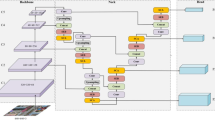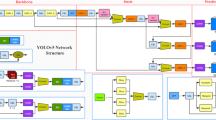Abstract
Autonomous passenger counting in public transportation represents an integral part of an intelligent transportation system, as it provides vital information to improve the efficiency and resource management of a public transportation network. However, counting passengers in highly crowded scenes is a challenging task due to their random movement, diverse appearance settings and inter-object occlusions. Furthermore, state-of-the-art methods in this domain rely heavily on additional custom cameras or sensors instead of existing onboard surveillance cameras, which consequently limits the feasibility of such systems for large-scale deployment. Hence, this paper puts forward an enhanced appearance descriptor with lateral movement compensation, which addresses the difficulty in counting passengers bidirectionally in cluttered scenes. We first construct a head re-identification dataset, which is used to train an appearance descriptor. This dataset addresses the absence of a person re-identification dataset, which in turn allows for accurate tracking of passengers in cluttered scenes. Then, a novel technique of applying a fedora counting line is introduced to count the number of passengers entering and exiting a bus. This technique compensates the impact of passengers’ lateral movement, which crucially increases the accuracy of bidirectional passenger counting using onboard bus surveillance cameras. In addition, a real-time implementation of the proposed method, which includes the integration of DeepStream and fedora counting line, is also presented. Experimental results on a challenging test dataset demonstrate that the proposed method outperforms benchmarked techniques with an average counting accuracy of 93.21% for entering and 96.10% for exiting public buses. Furthermore, the proposed system achieves this accuracy at an average frame rate of 16 frames per second, which represents a practical solution to a real-time application.





















Similar content being viewed by others
References
Advancing Public Transport (2015) Video Surveillance in Public Transport. Advancing Public Transport Portal Official
An L, Chen X, Yang S, Bhanu B (2016) Sparse representation matching for person re-identification. Inf Sci 355–356:74–89. https://doi.org/10.1016/j.ins.2016.02.055
Cho SI, Kang SJ (2018) Real-time people counting system for customer movement analysis. IEEE Access 6:55264–55272. https://doi.org/10.1109/ACCESS.2018.2872684
Greer L, Fraser JL, Hicks D, Mercer M, Thompson K et al (2018) Intelligent transportation systems benefits, costs, and lessons learned: 2018 update report. Technical report, United States. Department of Transportation. ITS Joint Program Office
Hirzer M, Beleznai C, Roth PM, Bischof H (2011) Person re-identification by descriptive and discriminative classification. Lecture Notes in Computer Science (including subseries Lecture Notes in Artificial Intelligence and Lecture Notes in Bioinformatics) 6688 LNCS, pp 91–102. https://doi.org/10.1007/978-3-642-21227-7_9
Israel GD (1992) Determining sample size
Kaiser J, Friedrich A, Tieck JCV, Reichard D, Roennau A, Neftci E, Dillmann R (2019) Embodied neuromorphic vision with event-driven random backpropagation, pp 1–8
Li F, Yang FW, Liang HW, Yang WM (2017) Automatic passenger counting system for bus based on RGB-D video 117:209–220. https://doi.org/10.2991/eeeis-16.2017.29
Li H, Xu J, Zhu J, Tao D, Yu Z (2019) Top distance regularized projection and dictionary learning for person re-identification. Inf Sci 502:472–491. https://doi.org/10.1016/j.ins.2019.06.046
Li W, Zhao R, Xiao T, Wang X (2014) DeepReID: Deep filter pairing neural network for person re-identification. In: Proceedings of the IEEE computer society conference on computer vision and pattern recognition, pp 152–159. https://doi.org/10.1109/CVPR.2014.27
Liciotti D, Cenci A, Frontoni E, Mancini A, Zingaretti P (2017) An intelligent RGB-D video system for bus passenger counting, pp 473–484. https://doi.org/10.1007/978-3-319-48036-7_34
Liu G, Yin Z, Jia Y, Xie Y (2017) Passenger flow estimation based on convolutional neural network in public transportation system. Knowl-Based Syst 123:102–115. https://doi.org/10.1016/j.knosys.2017.02.016
Nakashima H, Arai I, Fujikawa K (2019) Passenger counter based on random forest regressor using drive recorder and sensors in buses. In: 2019 IEEE international conference on pervasive computing and communications workshops, PerCom workshops, pp 561–566. https://doi.org/10.1109/PERCOMW.2019.8730761
Nalepa J, Szymanek J, Kawulok M (2015) Real-time people counting from depth images. In: Kozielski S, Mrozek D, Kasprowski P, Małysiak-Mrozek B, Kostrzewa D (eds) Communications in computer and information science, communications in computer and information science, vol 521, pp 387–397. Springer, Cham. https://doi.org/10.1007/978-3-319-18422-7_34
NV5 Engineering: Bus Stop Design and Safety Guideline Handbook. Technical report (2014)
Perng JW, Wang TY, Hsu YW, Wu BF (2016) The design and implementation of a vision-based people counting system in buses. In: 2016 IEEE international conference on system science and engineering, ICSSE 2016 pp 1–3 . https://doi.org/10.1109/ICSSE.2016.7551620
Redmon J, Farhadi A (2018) YOLOv3: an incremental improvement
Sun S, Akhtar N, Song H, Zhang C, Li J, Mian A (2019) Benchmark data and method for real-time people counting in cluttered scenes using depth sensors. IEEE Trans Intell Transp Syst 20(10):3599–3612. https://doi.org/10.1109/tits.2019.2911128
Tang S, Ye M, Xu P, Li X (2019) Adaptive pedestrian detection by predicting classifier. Neural Comput Appl 31(4):1189–1200. https://doi.org/10.1007/s00521-017-3152-z
R. Service Transportation Unit (2005) Bus stop design guide bus stop design guide 1. Technical report
Wang B, Cao G, Shang Y, Zhou L, Zhang Y, Li X (2020) Single-column CNN for crowd counting with pixel-wise attention mechanism. Neural Comput Appl 32(7):2897–2908. https://doi.org/10.1007/s00521-018-3810-9
Wojke N, Bewley A, Paulus D (2017) Simple online and realtime tracking with a deep association metric. In: 2017 IEEE international conference on image processing (ICIP), pp 3645–3649. IEEE. https://doi.org/10.1109/ICIP.2017.8296962
Yahiaoui T, Khoudour L, Meurie C (2010) Real-time passenger counting in buses using dense stereovision. J Electron Imaging 19(3):031202
Yang B, Cao J, Liu X, Wang N, Lv J (2018) Edge computing-based real-time passenger counting using a compact convolutional neural network. Neural Comput Appl. https://doi.org/10.1007/s00521-018-3894-2
Zhang X, Jing XY, Zhu X, Ma F (2020) Semi-supervised person re-identification by similarity-embedded cycle GANs. Neural Comput Appl. https://doi.org/10.1007/s00521-020-04809-7
Zheng L, Bie Z, Sun Y, Wang J, Su C, Wang S, Tian Q (2016) MARS: a video benchmark for large-scale person re-identification. In: Lecture Notes in Computer Science (including subseries. Lecture notes in artificial intelligence and lecture notes in bioinformatics), Lecture notes in computer science, vol 9910, pp 868–884. Springer, Cham. https://doi.org/10.1007/978-3-319-46466-4_52
Zheng L, Shen L, Tian L, Wang S, Wang J, Tian Q (2015) Scalable person re-identification: a Benchmark University of Texas at San Antonio. ICCV, pp 1116–1124. https://doi.org/10.1109/ICCV.2015.133
Acknowledgements
This work was supported by the School of Engineering and School of Information Technology, Monash University Malaysia, by Intel Technology Sdn Bhd, by Grants from the MSCA-Rise European Project IDENTITY, the Italian Ministry Research projects PRIN COSMOS and SPADA, and by a special Grant from the University of Sassari “fondo di Ateneo per la Ricerca 2019 e 2020”.
Author information
Authors and Affiliations
Corresponding author
Ethics declarations
Conflict of interest
All authors declare that they have no conflict of interest.
Additional information
Publisher's Note
Springer Nature remains neutral with regard to jurisdictional claims in published maps and institutional affiliations.
Rights and permissions
About this article
Cite this article
Sutopo, R., Lim, J.MY., Baskaran, V.M. et al. Appearance-based passenger counting in cluttered scenes with lateral movement compensation. Neural Comput & Applic 33, 9891–9912 (2021). https://doi.org/10.1007/s00521-021-05760-x
Received:
Accepted:
Published:
Issue Date:
DOI: https://doi.org/10.1007/s00521-021-05760-x




